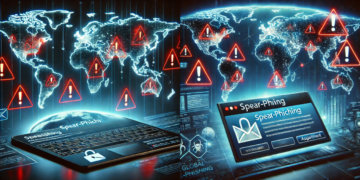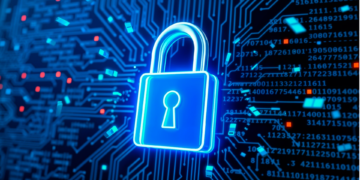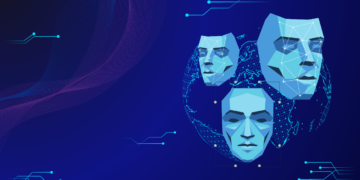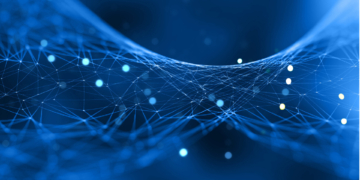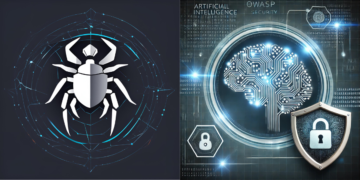Did you know that cybercrime is expected to cost the world over £8 trillion in 2024? This staggering figure underlines the urgent need for strong cybersecurity practices. As technology advances, so do the tactics of cybercriminals, driving constant innovation in the cybersecurity field. In this post, we’ll explore the latest trends in cybersecurity, shedding light on the key strategies and technologies that are shaping how individuals and organisations protect themselves online.
1. The Rise of Artificial Intelligence and Machine Learning in Cybersecurity
Artificial Intelligence (AI) and Machine Learning (ML) have rapidly become essential tools in the cybersecurity landscape. These technologies can analyse vast amounts of data quickly, identifying patterns that human eyes might miss. From spotting unusual behaviours that could indicate a security breach to detecting malware before it strikes, AI and ML are bolstering threat detection and response capabilities.
However, it’s worth noting that cybercriminals are also using AI to create more sophisticated attacks, forcing cybersecurity teams to stay a step ahead. By integrating AI-driven tools, companies can achieve faster response times and more accurate threat detection, ultimately enhancing their defences.
2. Zero Trust Architecture: Trust No One, Verify Everything
Zero Trust has emerged as a key cybersecurity approach that’s gaining momentum. Rather than assuming anyone within a network is trusted, Zero Trust demands verification for every access request. It’s based on the principle of “never trust, always verify.”
This model requires strict identity verification for every user and device attempting to access a network, ensuring that both internal and external threats are minimised. With remote work and cloud computing making traditional network perimeters less defined, Zero Trust provides a robust approach to modern cybersecurity challenges.
3. Cloud Security and the Need for Secure Remote Access
The adoption of cloud services continues to soar, particularly with the shift to remote work. However, this trend brings unique security challenges. Data stored in the cloud is vulnerable to breaches if not properly secured, making cloud security a top priority for many organisations.
To manage these risks, companies are investing in cloud-native security tools, such as cloud access security brokers (CASBs) and identity and access management (IAM) solutions, to protect their data and ensure secure remote access for employees. As businesses increasingly rely on the cloud, the focus on cloud security will only continue to grow.
4. Ransomware on the Rise and the Move Towards Ransomware Mitigation
Ransomware attacks are one of the most disruptive forms of cybercrime, locking users out of their systems and demanding payment for access. The last few years have seen a surge in ransomware attacks targeting businesses of all sizes, with criminals increasingly using “double extortion” tactics, where they threaten to leak data if the ransom is not paid.
In response, companies are focusing on ransomware mitigation strategies, such as regular backups, user training, and advanced endpoint protection. As ransomware remains a prevalent threat, being prepared with the right tools and response plans is crucial for minimising damage.
5. Increased Focus on Data Privacy and Compliance
With regulations like the GDPR and CCPA in place, data privacy has become a crucial component of cybersecurity. Organisations are required to protect customer data and are held accountable for breaches, meaning compliance is now a top priority for cybersecurity teams.
The importance of data privacy has led to greater investments in tools that enhance data protection, from encryption to privacy management software. This focus on privacy is a trend that will continue to shape cybersecurity as new regulations emerge and public awareness of data protection grows.
6. The Internet of Things (IoT) and the Expanding Attack Surface
The Internet of Things (IoT) connects everything from home appliances to industrial machinery, creating an interconnected network of devices. While this offers convenience and efficiency, it also broadens the attack surface, making it easier for hackers to gain entry into a network.
As IoT devices often lack robust security features, they can become easy targets. Cybersecurity efforts are increasingly directed at securing IoT devices, with organisations implementing stricter access controls, device authentication, and network segmentation to protect these vulnerable endpoints.
7. Human-Centric Security: The Role of User Education
Despite advancements in technology, human error remains a leading cause of security breaches. Many cyberattacks, such as phishing and social engineering, rely on manipulating users rather than breaking through technical barriers. As a result, cybersecurity is becoming more human-centric, focusing on training users to recognise threats.
Organisations are implementing comprehensive cybersecurity training programmes, equipping their teams with the knowledge to identify suspicious activity and handle potential attacks appropriately. By empowering employees with cybersecurity awareness, businesses can significantly reduce their risk of falling victim to cybercrime.
8. Automation in Cybersecurity
With the increasing number and complexity of cyber threats, manual response methods are often not fast enough. Automation is becoming a crucial tool, enabling cybersecurity teams to respond to threats quickly and efficiently. Security automation involves using software to automatically detect, investigate, and respond to security threats.
By automating repetitive tasks, cybersecurity teams can focus on more complex issues, improving overall security operations. Automation also helps with incident response, reducing downtime and minimising the impact of security incidents.
9. Quantum Computing and Future Challenges
Although still in its infancy, quantum computing poses both opportunities and challenges for cybersecurity. Quantum computers could break traditional encryption methods, which would make many of today’s cybersecurity measures ineffective.
In anticipation, researchers are developing “quantum-safe” cryptography, ensuring that data will remain secure in a post-quantum computing world. Keeping an eye on advancements in quantum computing and its implications for cybersecurity is essential for future-proofing digital defences.
Final Thoughts
The world of cybersecurity is constantly evolving to keep up with the latest threats. From adopting AI and machine learning to embracing Zero Trust and preparing for the rise of quantum computing, understanding these trends is essential for building a robust security strategy.
As cybercriminals continue to innovate, so must our defences. By staying informed about the latest cybersecurity trends, individuals and organisations can take proactive steps to protect their data, assets, and reputation in an increasingly digital world.

